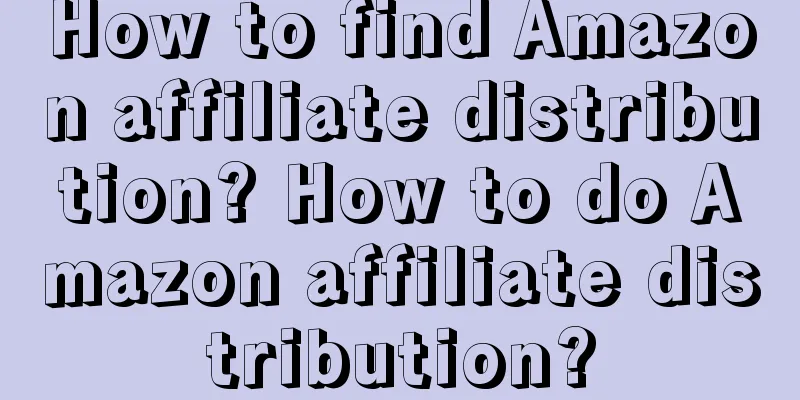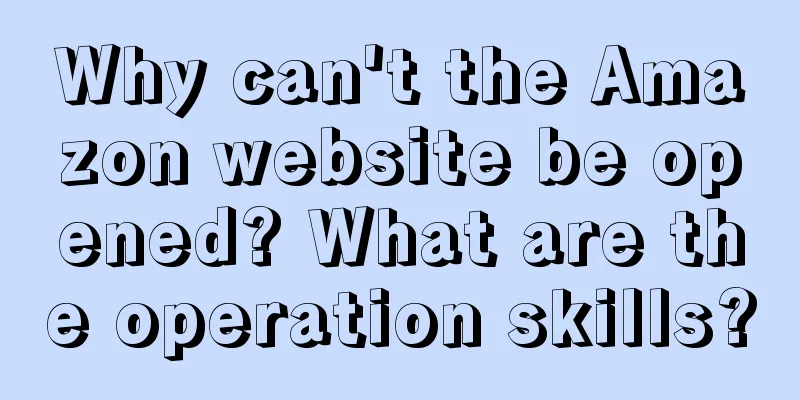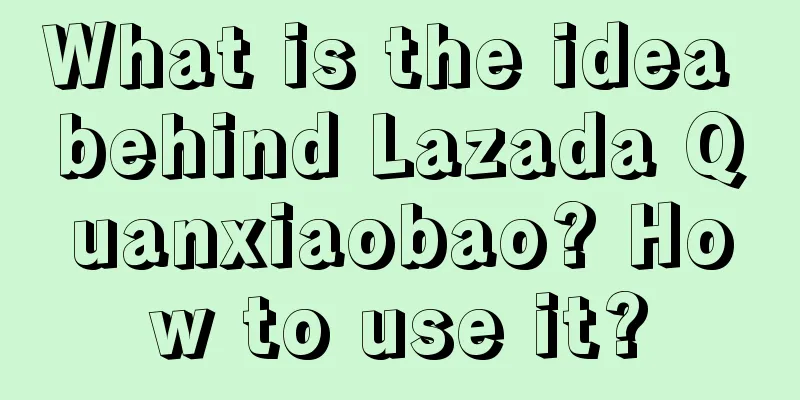TikTok: Outbreak, Chaos and Crisis

I have talked to a lot of brands recently, and the consensus is that Douyin self-broadcasting has become a constant. Under the established ROI, whether it is on the break-even line or a slight loss, it is basically a fixed value. Dabo, on the other hand, is a variable - it not only increases sales, but also has a more flexible profit margin. More importantly, this variable is easy to calculate: for every live broadcast, whether it is a loss or a profit, it can be known with a simple calculation. This kind of growth certainty is what many brands are looking for. However, once the cycle is extended, the Dabo account becomes the most difficult to calculate: whether the normal sales in the future have been discounted; whether it has exposure value for the brand or has damaged the brand premium; when Dabo becomes one of the core channels for bringing goods, can the overall sales volume increase steadily or decrease marginally. In corporate marketing and growth strategies, is Dabo a sustainable path or just a stopgap measure? Different industry types, different business stages, and different traders may give different answers to this question. In this article, we explore the factors that led to the explosion of Douyin Dabo, its value, as well as the crises and hidden dangers behind it, from the perspective of brand practice, so as to give you a complete evaluation perspective: to have a clearer understanding of the operating details of Dabo, and to examine and judge from a more diverse perspective. 1. Explosion: Dabo’s Journey to Deification1. Dabo DeificationRecently in Hangzhou, many top Tik Tok influencers are considering moving, and the reason is not that their original places are not good enough - basically they live in stand-alone buildings or have rented several floors in the CBD, and the interior luxury is no less than that of major Internet companies. "They are too rich anyway, so this little bit of appearance doesn't mean anything" - head of an MCN agency. Not only do companies have to relocate, but many influencers have also long since stepped out of the traditional "live broadcast room". Whether it's stage settings that are comparable to variety show effects, or booking business class to take teams to trace and visit places around the world, the specifications of live broadcasts are getting higher and higher, with no upper limit. The format of live broadcasts has also changed and upgraded along the way: Oriental Selection has embarked on a path of value output + sales, but for most anchors, it is better to operate and more profitable to do "special shows" - focusing on a major promotion theme or a brand throughout the day, creating a GMV rush to the top carnival again and again, and "creating a god" for themselves. One is a special event organized by the influencers themselves, such as node events or birthday events. Platform festivals similar to Tmall or JD.com often feature a combination of large and small brands selling goods in a mixed event: for big brands, the influencers themselves make concessions or subsidize discounts to gain popularity and traffic; if small and medium-sized brands want to be selected, in addition to contributing the pit fees and commissions to the influencers, they must cut prices to ensure the "optimal mechanism." The other is a special event for a single brand, similar to Tmall and JD.com's Super Product Day, with the standard configuration of "brand traceability" + "short videos to promote products" + "all-day live streaming to boost sales." There are two main types of cooperation models. The first is completely based on the fee ratio, for example, the commission is divided according to the agreed points based on the number of sales - some deposit is required in advance; the second is not to guarantee the volume, that is, a fixed special event fee + commission method, the commission will be lower. After a special operation, GMV of tens of millions or hundreds of millions is not uncommon, and people continue to break records every week. When Taobao and JD.com no longer announce the GMV of big promotions, another kind of competition is unfolding in a high-profile manner on Douyin. For influencers, it is extremely necessary to increase GMV, publish battle reports, and "deify" themselves - to seize traffic weight, ask the platform for better policies, and have more negotiating power with brands. Of course, behind this competition, the anxiety is also obvious: on the one hand, the growth rate of Douyin live e-commerce has slowed down this year. Judging from the data in the first half of the year, in e-commerce live broadcasts, the audience's willingness to interact has decreased, the length of stay has shortened, and the number of live likes, barrages and fans has all decreased; on the other hand, whether it is Oriental Selection, Liu Genghong or Make Friends, the platform does not leave a long "flowering period" for everyone, and more monetization in a short period of time is the top priority. 2. Where does the traffic come from?As everyone knows, Dabo's traffic usually comes from fans (following), recommendations (feed flow) and paid traffic. The former two mainly attract attention and popularity through lucky bag draws, welfare products, and discounted gifts, while the latter is to buy traffic with real money. Traffic structure of a KOL live broadcast As shown in the above figure, in the expert special session, the proportion of paid traffic can reach more than 30% - the investment cost is often several million. The specifications of lucky draws and lucky bags are also constantly upgraded: Apple, LV, La Mer and other big brands have long become standard. What supports these high investments are higher GMV and higher commission points. Many brands will even include traffic investment fees in the terms of business negotiations in order to achieve high explosiveness and conversion power. Of course, in the competition for live streaming traffic, Dabo also has an advantage. In the traffic distribution logic of Douyin this year, live streaming viewership and dwell time are important factors. Comparing store self-streaming and Dabo, the latter is obviously more watchable than the former, thus achieving a snowball effect of traffic tilt. 3. Where does high explosive power come from?Why does Dabo have such a strong sales explosion? Traffic is important, but what is more critical is the anchor 's ability to carry and convert traffic . The anchor team has a precise grasp of the user's psychological motivations, constantly throwing out bait and intensive output in a fast-paced and excited mood, and interspersed with benefits, lucky draws, gifts, and mechanisms. It is worth noting that unlike the top brothers and sisters of Taobao (who are salesmen), many Douyin masters have worked as hosts, actors, and guest speakers, and are more familiar with "performance-style selling." For example, the following methods are known to be routines, but are often difficult to resist: Scarcity: Every live broadcast room of an influencer basically emphasizes that the product is limited to ** pieces, there are only ** pieces in stock, and they are trying to get the brand to replenish ** pieces, and there will be no replenishment once they are sold out, etc. In conjunction with these verbal broadcasts, the operation team also constantly removes and re-lists the products, creating the illusion that the products are "sold out" time and time again, stimulating consumers to pay for the sense of limited quantity and scarcity. Kick people out: After posting the link, the anchor often deliberately emphasizes "kick out a group of people" many times, that is, canceling the orders of those who have not paid. On the one hand, it creates a tense rush to buy, and on the other hand, it stimulates more people to pay immediately. Brushing orders : Brushing orders is also a must for live streaming: on the one hand, it is used to "lure" the platform. If there are a large number of real-time transaction conversions at the beginning, the platform will give more accurate traffic recommendations; on the other hand, creating the phenomenon that the product is "very popular" and "very popular" can also encourage more people to impulse buy. Exaggeration: Compared with the strict Guangxin (advertising material review) of information flow delivery, the scale of Douyin live broadcast is much larger. The anchor can often show the selling points of the product in a very exaggerated way and highlight the price strength. Commitment: For points that users care about, such as returns, exchanges, or price guarantees for big sales, influencers usually make multiple promises during the live broadcast, and even take out the stamped price guarantee and after-sales responsibility agreements signed with the brand to relieve customers' worries. In order to convince everyone of the discount offered by live streaming, anchors often perform the negotiation (or even heated arguments) process with brands in short videos or live streaming (all scripted in advance). In the variety show "All Girls' Offers", this part has even become an entertainment program, and in the live streaming rooms of many top Douyin influencers, these "plots" have also become standard. … There are also music, drum beats, assistants, benefits, mixed products, etc. In the short and fast time of the live broadcast room, any means that can stimulate users to place orders are used to the extreme. Of course, this also buried a lot of hidden dangers, such as high return rate, unbalanced mentality after impulse, etc. Some consumers complained to the media: "It takes more than 20 minutes to send a so-called benefit, and most of these welfare products are very cheap. If they are sold at 9.9 on the roadside stalls, no one will ask about them." In the live broadcast room, the purchase itself is full of exaggerated excitement. Borrowing a sentence from Fromm (who first proposed "consumption alienation"):
That is, happiness comes only from the act of buying, not from using the item . Experts spared no effort to create a "shopping feast" in the live broadcast room - the shopping itself is entertainment , and in the frenetic rhythm, it brings consumer desire and GMV to the peak. 2. Chaos: Disordered Business EcosystemFor brands, the uncertainty brought about by the chaos in the process of cooperating with influencers in live broadcasts, from negotiation to live broadcasting, has almost become commonplace. The standard configuration of the Dabo team is usually anchors, business of various categories, product selection, operations, and at a higher level, there are also content teams, anchor assistants, etc. In order to get a good slot or a special show of a popular anchor, almost everyone in the entire chain must be "connected": business negotiates conditions, product selection determines SKUs, operations arrange slots, and anchors have the final say. In addition, the industry itself has a high turnover of personnel, and different positions have different levels and voices in different companies. This layer of uncertainty, coupled with the elements of time and peer competition, becomes even more uncontrollable: competitors are bidding at any time, and the effectiveness of other influencers’ product promotion will affect whether the product can ultimately be broadcast. Complaints from brands can be seen everywhere Collaborating with Dabo is a bit like collaborating with celebrity artists: 1. The cooperation terms are highly non-standard and subject to great changes due to dynamic environmental factors; 2. The experts themselves have a high say, but their decisions are mixed with many irrational factors; 3. Team members are rather gangster-like and easily emotional. The difference between the two is that in the entertainment industry, both short-term interests and long-term relationships are important. In some games, long-term cooperation between the two parties may even outweigh short-term interests; while in the live broadcast industry, interests are always king. Compared with celebrity collaborations, the risks posed by Dabo to brands are much greater: If you cooperate with a top influencer, you will start preparing a large amount of stock 2-3 months in advance. In case the show fails, a large amount of inventory will have nowhere to be dumped, and cash flow will turn into unsaleable goods lying in the warehouse, which may very likely destroy a brand (especially pure online brands, which have weaker risk resistance). The big and small agencies and MCNs acting as middlemen have added a layer of uncertainty, and fraudulent deposits and guarantees are everywhere. In response to this, industry insiders have summarized a special anti-scam summary :
However, being successfully broadcasted does not mean that you can sit back and relax. During the broadcast process, the following factors will affect the final result: the location of the product, who will be the host, the host's mood, the professionalism of the assistants, whether the product will be out of stock, whether the broadcast should be turned off due to poor traffic... These are all variables that affect the final result. Some influencers will suddenly make up gifts or set prices on their own, and once the price is broken, other platforms may immediately follow suit, affecting the entire sales market and price control system. After the live broadcast, there is no closure: if the effect is not good, the influencer and the brand will often have a fight over how to settle the accounts (whether the guaranteed money can be returned, whether the commission should be changed, whether to broadcast again or refund, etc.). There is also a problem involved here: fake orders and returns. Whether this part is included in the income commission, how to define the time period, etc. Some people say that Dabo, like offline distribution, is a business of favors . This is true, but live streaming is more of a one-time business, involving large transactions and cash flow, and the risks brought by its disorder and chaos are much higher than offline. From a regulatory perspective, compared with other advertisements on the Douyin platform (hard advertising, star map seeding, self-broadcasting, etc.), Dabo's business and transaction system basically takes place offline outside the platform - the influencer's right to speak is higher than the platform. This means that it is difficult for the platform to effectively regulate, or in other words, the role of the platform is more like assisting in investment promotion rather than management. 3. Crisis: The cliff behind the shortcutAlthough Douyin’s live streaming faces various confusions and risks, it is still a way for many brands to overtake others. Especially for small brands, going from obscurity to taking the stage may only require a live broadcast by a top influencer or a top influencer in a vertical category. After becoming famous overnight, most brands will continue to use Dabo as their core marketing tool and sales channel, the so-called "integration of brand and effect". Although there are risks, it is much easier than refined global marketing, brand investment and channel construction. Judging from the business accounts, live streaming does not necessarily lose money. For example, in the beauty category, the gross profit margin is 65%, the deduction rate is 20-30%, the gifts are controlled within 5%, and then a 5% commission is given to the sales. In this way, there is still a net profit of 15-20%. If they can run a positive profit, most brands will build two types of models: 1. Dabo + self-broadcasting model : When Dabo is running well, the self-broadcasting room can be more flexibly adjusted through ROI to do more or less to ensure the monthly GMV base and profit. 2. Long-term cooperation with mid-level influencers : For top influencers with high investment and high risk, long-term cooperation with mid-level influencers can often better guarantee the stability of sales revenue, purchase inventory and the entire supply chain. If the product has certain advantages, find stable influencers to cooperate with - for example, each influencer can output 500,000-3 million GMV per month, and the comprehensive ROI is controlled at more than 3-5 (usually a better slot + commission can be negotiated), and the commission part is used for investment. In this way, if 3-5 people cooperate, there will be a basic plate of several million GMV per month. Based on these two models, the momentum of top influencers can be seen as an opportunity to break out of the circle or to have a big promotion. It seems that this path is stable and sustainable. However, even if the profits are positive on paper, this path still hides many crises. The crisis comes from both outside the enterprise and inside: External crises are easy to understand, including the life cycle of influencers themselves (which requires constant iteration) and the fierce market competition: competitors can easily poach influencers by providing better products, better mechanisms or higher commission ratios, even if they have been cooperating for a long time or under a contract - in this industry, the chain of interests is very fragile. Even big brands with a certain foundation cannot ignore the negative effects of this shortcut: Overdrawing future sales, absorbing traffic from other platforms, and users developing the habit of discounting and price comparison, which reduces brand recognition... If you keep following this set of shortcuts, it is easy to fall into the cycle of: accurate traffic is drained - start to fake orders and close transactions - ROI continues to decline - cannot invest in other channels or brand marketing due to losses, and have to rely on more live broadcasts by experts. The impact within the company is even more serious. The seemingly "easy" marketing and sales methods actually cover up many problems: and human nature is often happy to "the situation is very good":
These problems, which should have been solved by product innovation, brand and channel building, and refined operations, seem to be easily "solved" by simpler and more brutal methods. In fact, it is tantamount to boiling a frog in warm water. In addition, people have an irresistible preference for certainty. On the one hand, it takes investment, energy and heavy resources to build brands and channels, and on the other hand, it is constantly looking for influencers and live broadcast opportunities. On the one hand, it is difficult and uncertain, and on the other hand, it is fast and results are obtained. Under the premise of limited resources, the temptation of "certainty" is incomparably great. In fact, when you hand over the lifeline of your business to others, whether it is the platform, traffic or influencers, there is a huge "uncertainty" in itself. The marketing industry has always been in line with the simple logic of the business world: What seems to be the cheapest path actually costs the most. 4. As long as you keep planting grass, you can keep harvesting?As a brand, before talking about my suggestions to my peers, I would like to first talk about the next seemingly better concept: The planting and harvesting are integrated into a closed loop, combining quality and effect . This concept was created by the platform and continuously promoted, and it has indeed attracted countless fans. First of all, it is useful and even very efficient in the short term. However, once the time is extended, this logic will not hold true, or it will not form a self-closed loop. First, let’s talk about the “planting” aspect: which users are most likely to be planted? First, there is a potential demand for the product or service; Second, it is easy to make impulse purchases. The intersection of these two types of people is the target group for maximizing the effect of seeding. However, this group pool is not as large as we think (competitors are also spending money to grab it at the same time). As time goes by, the cost of advertising will be repeatedly raised. If brands want to maintain efficiency, they must find more influencers to seed and spend more money to reach them more frequently. More importantly, the “planted grass” crowd did not become the brand’s subsequent natural traffic source: Quoting General Liang, it is very clear:
However, the logic of content seeding influencing consumers is different. Consumers’ purchase reasons are largely due to the recommendation of influencers. The vivid portrayal of influencers makes people want to try it. Moreover, different KOLs will use different expressions to interpret brand information. Due to the complexity and diversity of advertising information, consumers’ impressions of brands are varied and unstable. In other words, hard advertising makes people feel that they are not affected by the advertisement, while content that promotes advertising makes people feel that they are being misled. Once consumers feel that they are being misled and that their consumption is not what they really need, their attitude towards brands will become harsh, and they will often be wary of and examine the brand, and then examine their own consumption habits. This unnatural wariness is the reason for the "consumption motivation fault", which makes consumers think that their consumption habits are unnatural and inappropriate." Therefore, whether it is the level of continuous repurchase or word-of-mouth self-propagation, it is difficult to drive the continuous inflow of natural traffic. Let's talk about "cutting the grass". What do we use to cut grass? Whether it is a live broadcast expert or Qianchuan or CID, the best hook is price reduction or discount. In other words, we are cultivating users' habit of "waiting for discounts" and telling users that you should not buy at full price. This method of cutting is to cut off part of the "meat" of natural transactions. Originally, users could choose naturally without spending money. Now we not only need to invest in traffic to reach them, but also reduce prices to "cut them". Of course, there are also some users who don’t really want the product or service, but are tempted into buying it impulsively by the low price. The result is the same as being lured by the grass-roots lure - they are skeptical and critical of the brand. In addition, just like "planting grass", the cost of "mowing grass" is also rising in the competition. In this competition, both the bidding price and discounts will continue to rise. Of course, the model of planting grass + harvesting is still effective in the early stage, especially when new products are launched, they can quickly capture attention with the explosive power of Douyin traffic and get the most likely users to convert. Whether it is to seize the time window to quickly create popularity, or to continuously and actively pick the "lowest fruits", it is a worthwhile and efficient way. However, everything has its limits. The "seed-cut closed loop" is not a panacea, nor is it a "safe card" that can continuously make profits. Author: Lan Lan Official account: Taro and Cat Talk (ID: taro_cat) |
<<: Is print media dead? There are still some creative ways to save it
>>: Alas, I was defeated by AI search
Recommend
My copywriting lost to the folk master again
Have you ever paid attention to the copywriting ar...
With 3 million followers in 30 days, Douyin's science popularization track has ushered in "new hope"
Due to various difficulties, the science populariz...
8 very interesting copywriting
In this article, the author will share with you 8 ...
How does cross-border e-commerce without a source of goods work? Tell you whether it is worth doing!
With the development of e-commerce, more and more ...
Big model price cuts, a war with no winners
In just one week, large models have entered the &q...
How to operate an e-commerce business without supply from Amazon? How to register and open a store on Amazon?
As a world-renowned e-commerce platform, Amazon pr...
How about selling electrical products on Amazon? How to apply?
Many friends want to open stores and sell products...
How long does it take to open a Lazada Super Alliance account? FAQ
As a cross-border e-commerce platform, Lazada'...
Why is there no order after dozens of clicks on Amazon? Analysis of the reasons
Merchants who run Amazon stores have more or less ...
What is the difference between leaving a review and not leaving a review on Amazon? What does it mean?
Amazon review forms are divided into two types: le...
Does Shopify require rent? What are the Shopify transaction fees?
Cross-border e-commerce on Shopify adopts the mode...
A formal way to quickly increase sales on Xiaohongshu
How to convert and quickly increase sales on Xiaoh...
How to do cross-border e-commerce on Facebook? Tips to share
Facebook is a social platform. Two years ago, it l...
Is it feasible to use AI digital people to shoot Douyin?
If you use AI digital people as stand-ins to shoot...
What is the best thing to sell on Amazon US? How is the US site?
Now there are some changes in Amazon's store o...









